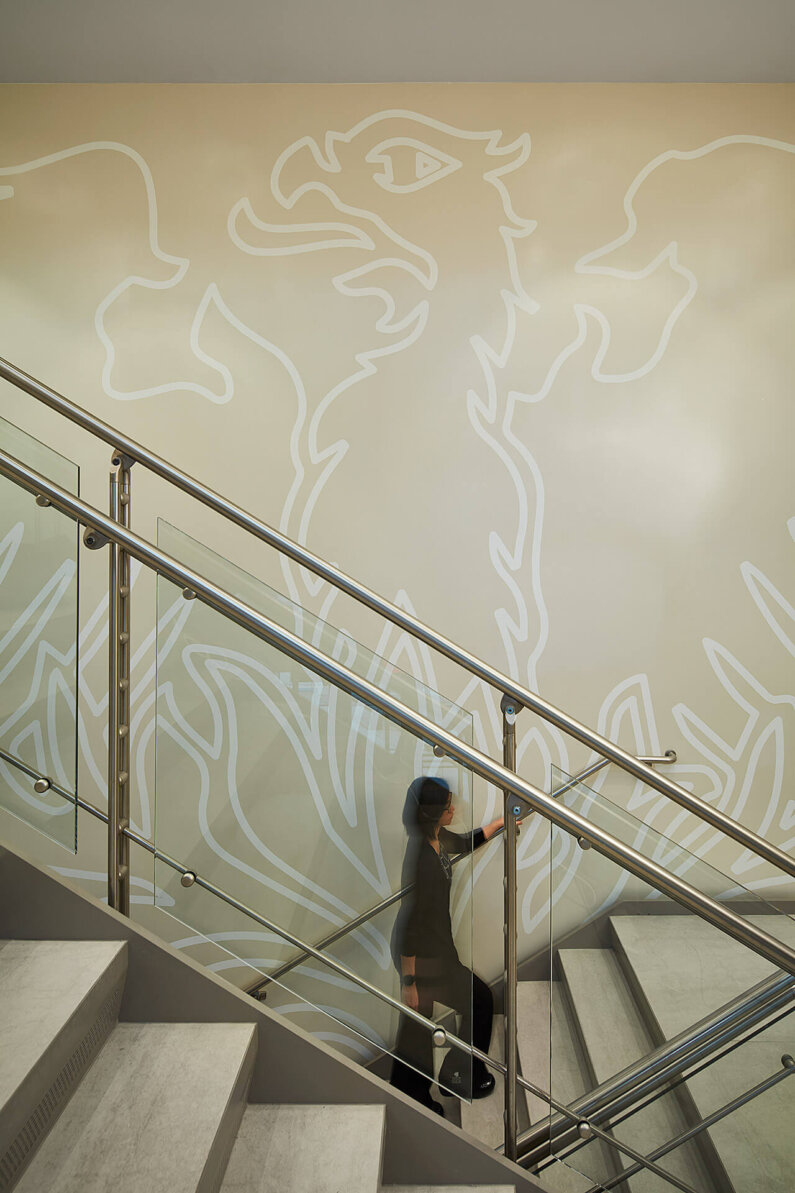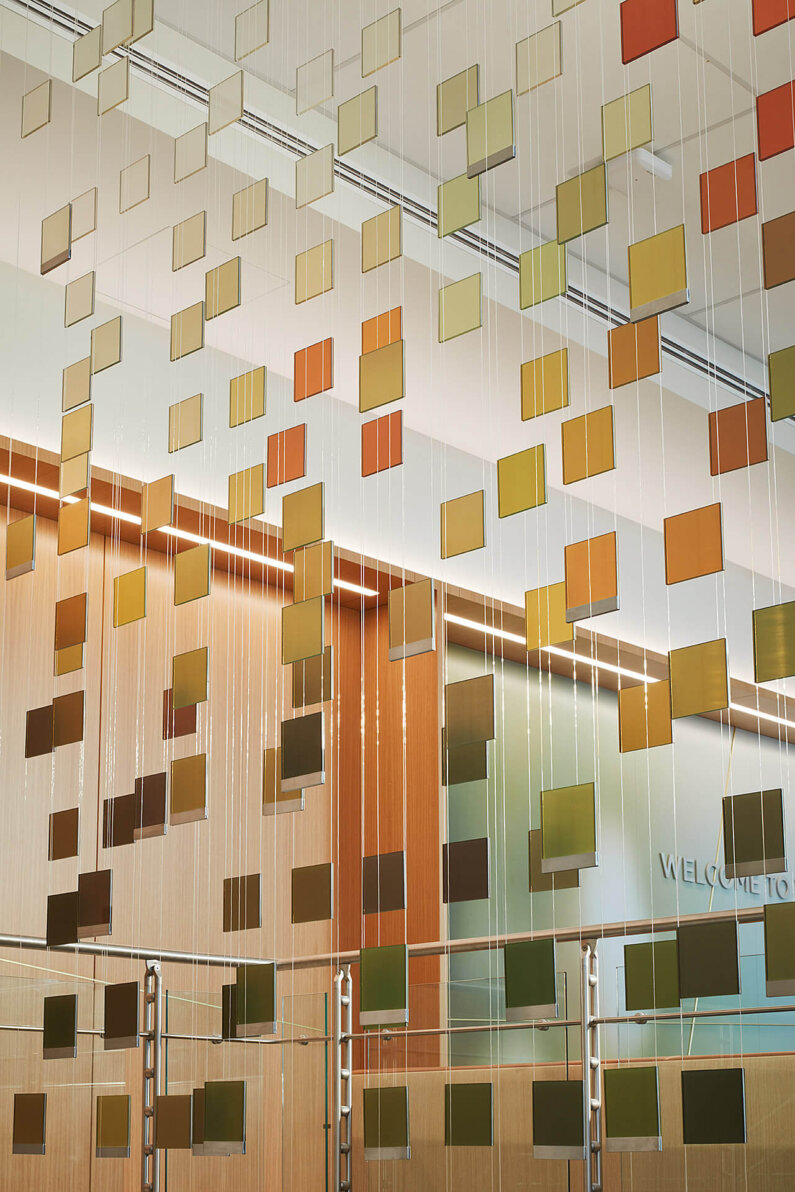Human-forward healthcare design can change how you feel going to the doctor
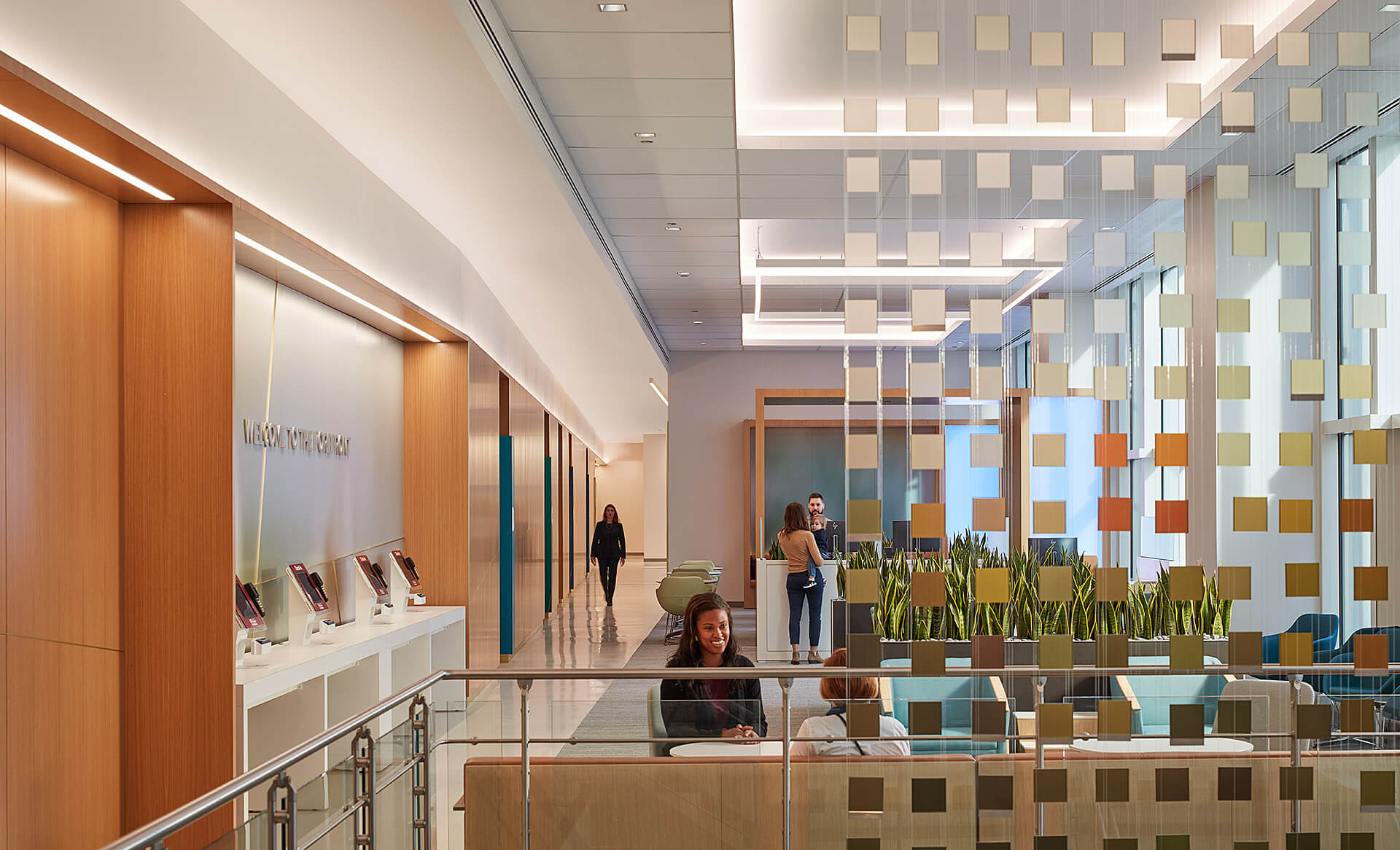

In an era where more than half of millennials do not have a primary care physician, how can health systems lure them away from the quick, convenient care they receive from apps or “doc-in-a-box” retail clinics? For baby boomers, too, convenience and ease of access to the highest-quality care are central concerns.
One solution is to remove the clinical feel from a doctor’s visit and turn the experience into one that is simple, patient-focused, and holistic. The new University of Chicago Medicine River East Ambulatory Care Center in the River East neighborhood combines a feeling of hospitality with care from experts in over two dozen specialty practices, transforming the patient experience in a space that had been a vacant fitness center and increasing UCM’s presence in the downtown market.
The patient’s first points of contact provide cues to University of Chicago Medicine’s identity and commitment to healing – that the new clinic is poised to take care of the entire person. The generously-sized waiting lounge runs the entire length of the north side of the facility, and is bathed in light from floor to ceiling north-facing windows. Seating areas, with aromatherapy and a warm, nature-inspired palette of colors, are divided by planters and banquettes – ideally-suited for social distancing of visitors. Color and material choices are inspired by nearby Lake Michigan, the gardens in the neighborhood, and the warmth of the sunset to make patients feel welcome and relaxed.
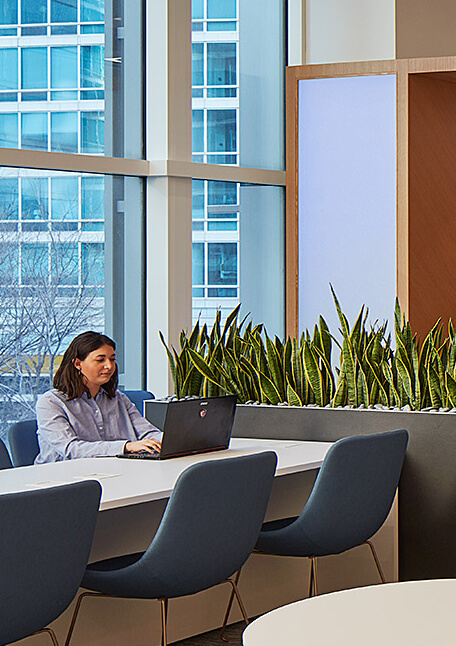
For delivery of care, a key design challenge in the 40,000-square-foot facility was working around the deep irregular shaped floor plate, a cast-in-place concrete structure with large concrete columns and a building core rotated 45 degrees to create a modular clinic layout that would promote team-based care. The clinic includes 32 exam rooms, three procedure rooms, blood draw/lab, infusion, and clinical and staff support spaces, which are shared by multiple specialty services such as Women’s Health, Dermatology, Endocrinology, Cardiology, Urology, Gastroenterology, Weight Management, and Non-Chemotherapy infusions.
The flexibility of the design proved immensely important within weeks of opening, when the Center was forced to make operational changes due to the COVID-19 pandemic. UCM quickly adapted within the flexible and resilient design of their new clinic. Staff areas, including small huddle rooms, provide quiet work and office areas, and have easily adapted to telemedicine stations to meet the pandemic-driven increased need.
The University of Chicago Medicine Ambulatory Care Center at River East returned to expected levels of in-person care, with a design that provides a combination of ample public spaces and adaptable areas that allow for social distancing for patients and staff and for private meetings with doctors and patients. Going forward, UCM is well-placed to handle the increased level of telehealth services that millennials and boomers alike are expected to demand while also providing a flexible clinic that supports in-person patient care in the Covid-19 era.
The vision for our new River East site was to extend the extraordinary care patients receive on our Hyde Park campus closer to where they live, shop and work in a location that is convenient, accessible and offers unique services and amenities. It was also important to ensure our providers and support staff work in an environment that encourages collaboration and innovation in a private and secure venue. Little did we know that this design would serve us well during the COVID-19 pandemic. Our modular waiting areas, divided team stations, huddle rooms and collaboration stations allowed us to continue supporting our patients remotely and on site in a safe manner. We were able to adapt quickly and meet patient and provider expectations for convenient and accessible care. We continue to use the beautiful and practical River East design in our planning of future UChicago Medicine locations.
Theresa Quinn
Executive Director, Regional Operations, Ambulatory Services at UChicago Medicine
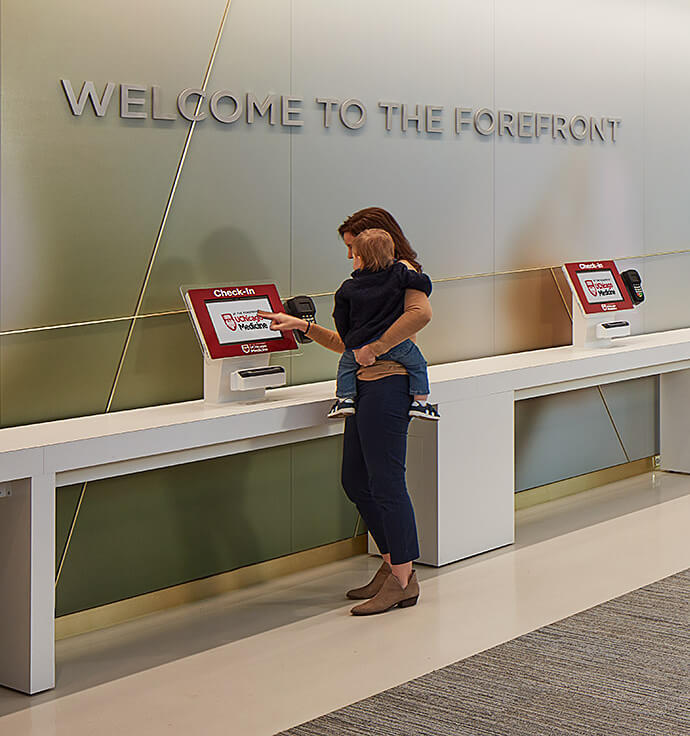
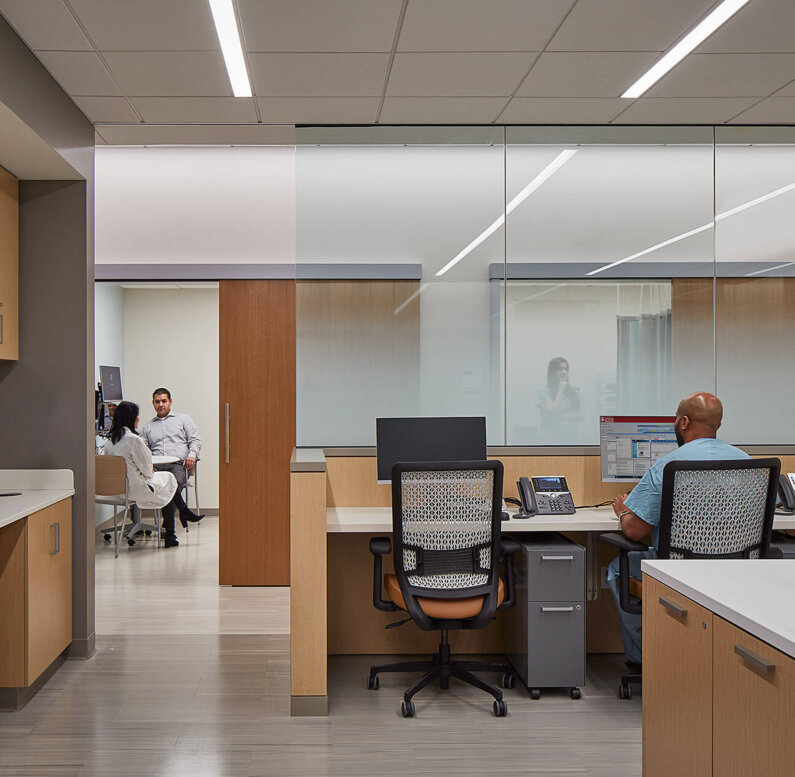
Meanwhile, a new Primary Care Clinic on the ground floor is expected to open in spring 2021. At approximately 5,400 square-feet, the Clinic, with same-day scheduling, will expand services at the River East Center with additional exam rooms along with blood draw and lab. Along with traditional primary care treatment, holistic therapies such as acupuncture will be offered. A double-height space flooded with natural light will connect the Primary Care Clinic to the Multi-Disciplinary Clinics on Level 2. The public lounge with an expansive glass storefront along Grand Avenue will increase the visibility and connection to pedestrians.
By offering a continuum of care convenient for patients and providers, with reduced layers of complexity that is supported by thoughtful design and wayfinding, and a streamlined check-in and appointment process, UCM’s River East Ambulatory Care Center is intentionally designed to meet new consumer demands and the challenges of retail clinics and app-based care. As providers bring care into the communities where patients live and work, it is vital to create an experience that both reinforces the values of the institution and creates authentic connections to the population that is being served. Easy scheduling, digital kiosks, interior design that responds to a community’s identity, strong branding, and, of course, high-value care can all help set the UCM clinics apart in today’s race for patient retention.
